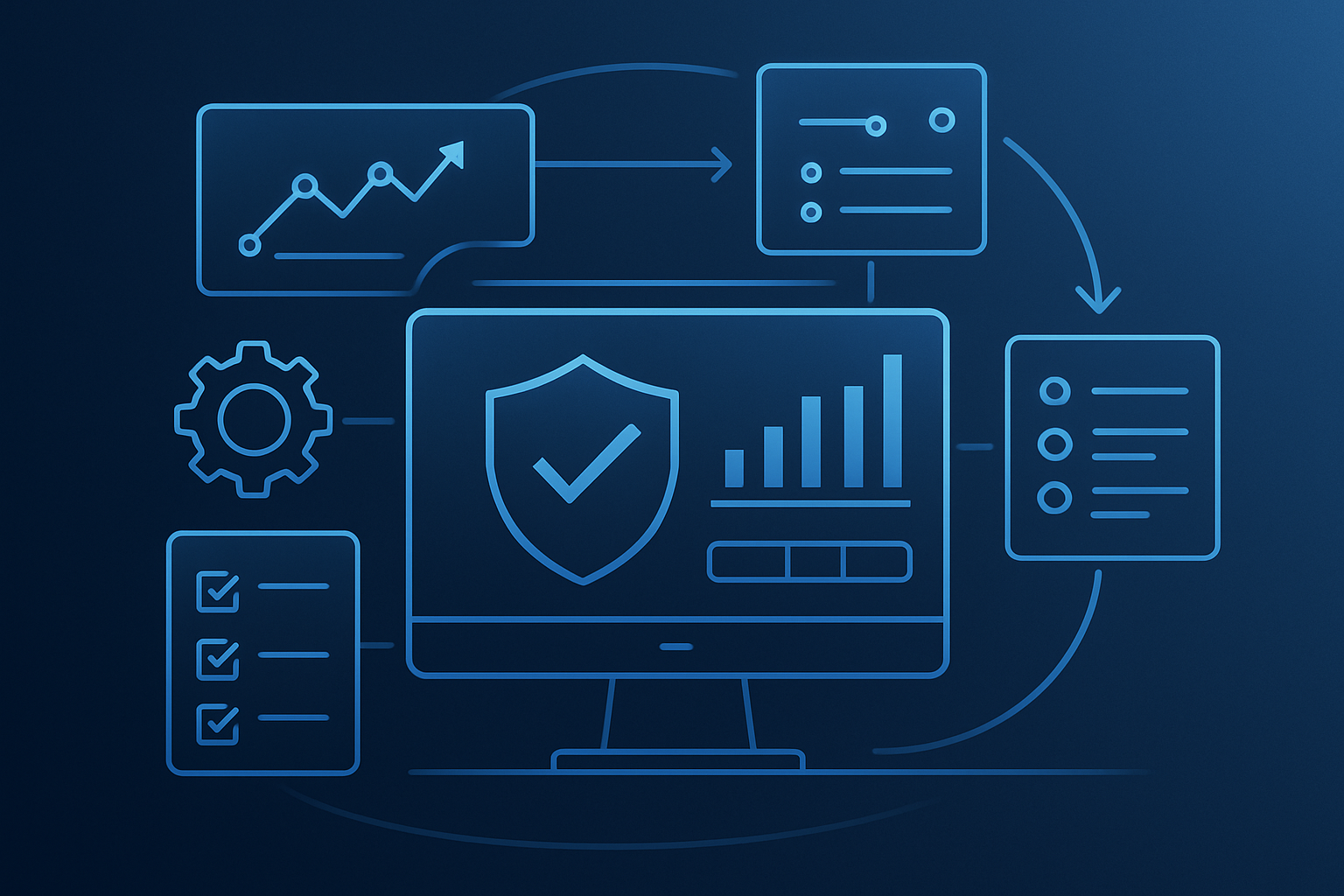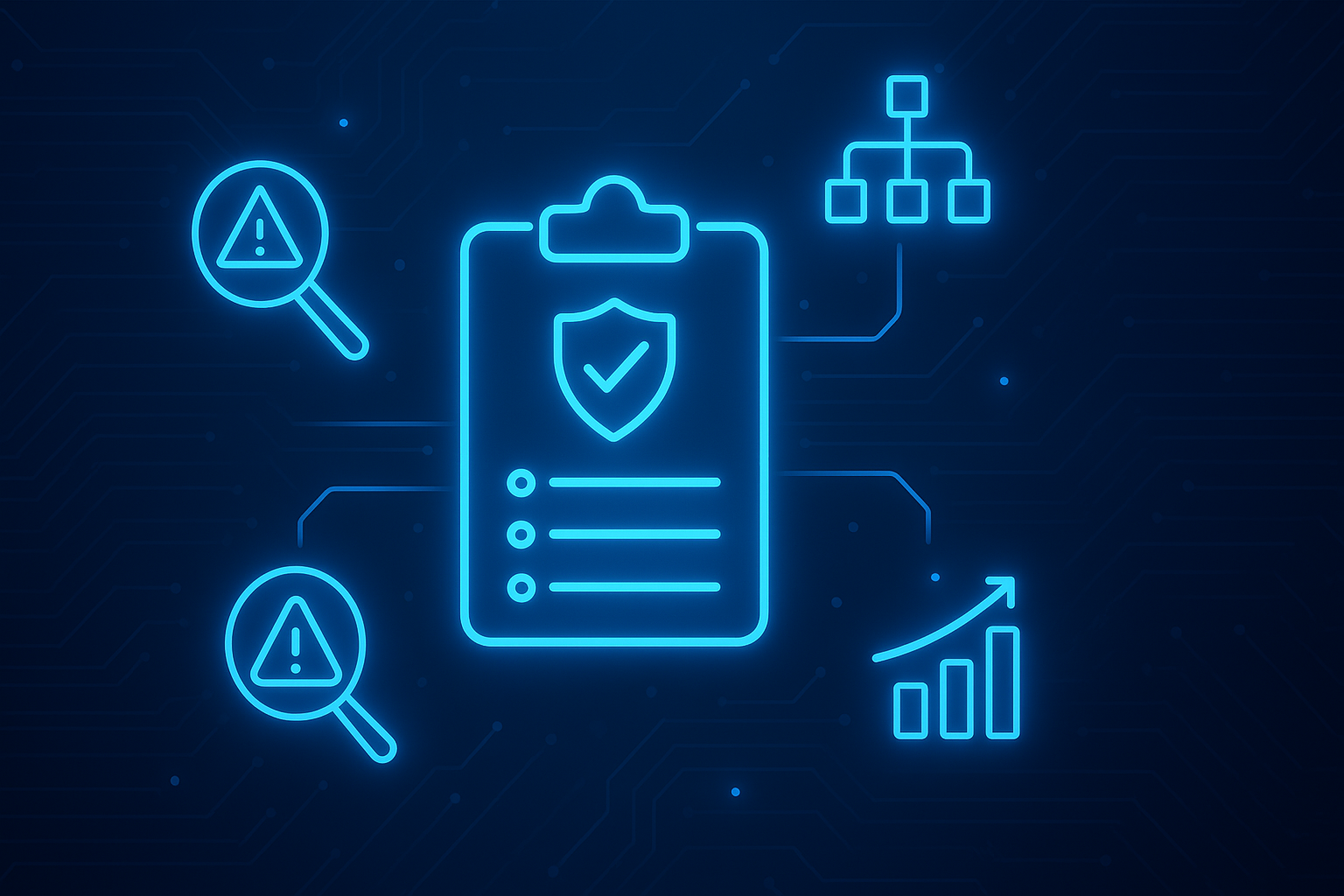Augmenting GRC Tools with Automation & AI
The quote “safety is about protecting humans from machines, while cybersecurity is about protecting machines from humans” has never been more accurate. As bad actors rise with the expansion of digital transformation across every industry, data and sensitive information are at peak vulnerability. In this day and age, there needs to be more GRC automation tools to take some of the burden off of security teams that go through controls manually.
Ray Kurzweil, one of the modern thought leaders for artificial intelligence (AI) and machine learning (ML), has expanded on what embracing AI means. He says, “We are entering a new era. It's a merger between human intelligence and machine intelligence that will create something bigger than itself. It's the cutting edge of evolution on our planet. Human beings are a species that has undergone cultural and technological evolution, and it's the nature of evolution to accelerate. Its powers grow exponentially, and that's what we're talking about.”
Human intelligence and machine intelligence are becoming increasingly intertwined, but there’s still a lot of room for evolution in the space of cybersecurity, specifically in how AI can influence governance, risk management, and compliance. We’ve delved into continuous control monitoring before, but when we’re talking about continuous control monitoring or continuous control automation, what does that mean? What if, with natural language processing (NLP), we could automate most of the process, freeing up time and money, and paving the way for company-wide innovation?
How to Address Cyber Threats with NLP-backed Automation
There are several AI-fueled cybersecurity solutions out there, and it has definitely become a buzzword in cyber. These GRC "automation" tools still tend to require human oversight and intervention. They do not achieve pure automation. In this industry, automation often involves sending texts or emails to employees and security leaders when controls need to be addressed or updated. However, what if there were more powerful options that could enable an automated system to identify how threats endanger your current tech stack?
NLP’s ultimate objective is to “read,” decipher, and understand language that’s valuable to the end-user. Currently, there are several ways NLP is used in day-to-day life. Many are familiar with chatbots, auto-complete emails, or texts. However, there’s a gap in cybersecurity risk management where NLP could be used to inform risk and regulatory compliance. Since interactions between humans and machines are based on language processing, NLP allows organizations to process increasingly large amounts of data, granting them the ability to be more efficient, risk-cognizant, and secure.
Incident detection and prediction is one area where humans can use AI. NLP, used for risk and compliance requirements, can identify overlaps in frameworks and data from an enterprise’s tech stack and use it to identify vulnerabilities in security infrastructure.
Cybersecurity as an industry is shifting its stance regarding addressing threats. Reacting to breaches after they occur is no longer enough. When companies get “bombed” in these incidents, they lose revenue and trust.
Threat intelligence with NLP-fueled automation can take vast amounts of data and understand not just the meaning of the words, but can use millions of data points to identify a pattern that will aid in detecting threats. And it only continues to learn. It’s not a product that is always in danger of becoming obsolete, like legacy cyber GRC solutions. It will evolve with us.
How to Use NLP to Transform Cyber Compliance Operations
Using NLP in a cyber risk strategy can increase cyber resilience. Since most risk assessments operate on textual information, NLP can connect the dots between different frameworks and standards against a risk register. It can inform business processes and mitigate risk through content analysis that efficiently tracks changes to regulatory requirements.
Many modern integrated risk management solutions require the use of multiple, segmented products, resulting in siloed information that can be difficult to explain, much less navigate. This is even more critical when a breach happens because it doesn’t allow CISOs or higher-level executives to make decisions based on aggregated, real-time data and insights. When data breaches occur in mere seconds, manual monitoring can be the difference between success and failure, given that every decision is delayed by hours due to manual tracking.
CyberStrong uses NLP technology to make sense of data from a security tech stack, showing where and how various tools and solutions manage compliance programs across standards. NLP allows for improvements over time by learning from itself and becoming more efficient in enhancing cybersecurity processes. The automation of assessments gives business leaders insight into real-time risk monitoring.
“Crosswalking” is a process where the NLP engine identifies keywords that map to specific controls and control actions. Currently, the process of crosswalking in many cybersecurity solutions is manual and inexact. NLP enables organizations to leverage nascent data emerging from a platform. When other cybersecurity companies discuss crosswalking, it’s typically behind closed doors, and no one knows how it happens or what it does. Mapping different frameworks doesn’t always provide a direct 1:1 solution. So, having an option for automation that is transparent, thorough, and learns is critical in increasing maturity and understanding.
Teams that monitor risk must become aware of the changes that can happen minute to minute in an agile environment. Every environment needs to be supervised and evaluated. This kind of constant, manual assessment isn’t practical for companies to manage with employees alone. Humans are fallible, and it’s harder to discover gaps in security without a continuous auditing process that leverages automation to achieve its goals.
Layering NLP automation with Continuous Control Monitoring tools can help you achieve cutting-edge compliance that allows you finally shift from a reactive stance to a proactive leader. The CyberStrong solution offers both to empower you better.
Enhancing GRC Efficiency through NLP-Backed Automation
As cyber threats grow more sophisticated and regulatory demands increase, the traditional manual approach to governance, risk, and compliance can’t keep up. The future of cyber compliance lies in intelligent automation—driven by technologies like NLP—to streamline control mapping, reduce human error, and enable real-time decision-making. CyberSaint’s patented NLP engine empowers organizations to break down silos, accelerate compliance efforts, and drive efficiency with unmatched accuracy and transparency.
With CyberStrong, organizations can finally replace the tedious, time-consuming process of manual control mapping with dynamic, AI-powered automation that evolves with their environment. The result? Faster audits, stronger security posture, and more time to focus on innovation and strategy.
Ready to transform your compliance operations?
Book a demo to see how CyberSaint’s patented NLP technology powers more intelligent control mapping and automated compliance, backed by real-time insights and industry-leading accuracy. Let our experts show you how to work smarter, not harder.





.png)
.png)
.png)
%201.png)
.png)




